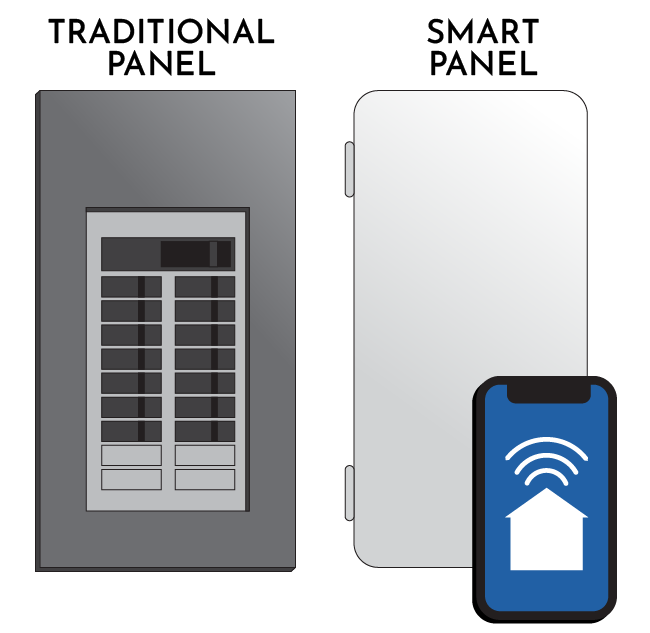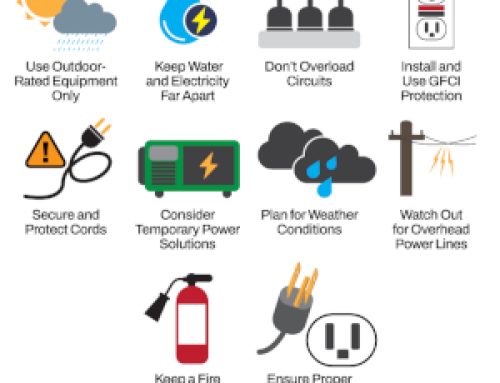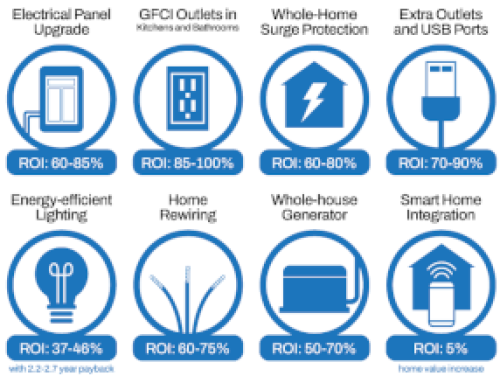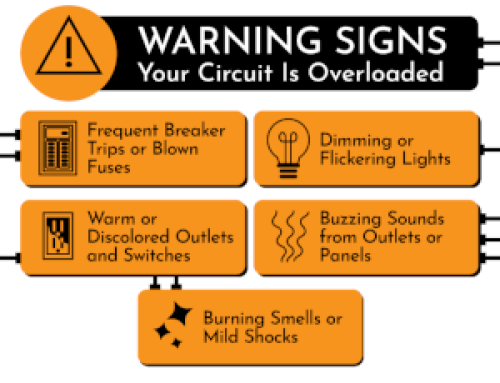As smart homes become more common, so does the need for smarter electrical infrastructure. Homeowners are plugging in more energy-hungry devices than ever—from EV chargers and HVAC systems to smart ovens, lighting, and home entertainment centers.
Without proper power distribution, these devices can strain your electrical system, leading to safety risks and reduced performance.
This is where load balancing comes into play. Load balancing ensures electricity is distributed evenly across your circuits, helping your smart home operate safely and efficiently.
Let’s explore what load balancing means, why it matters, and how to know if your home is ready for an upgrade.
What Is Electrical Load Balancing?
In electrical terms, a “load” refers to any device or appliance that consumes power.
Load balancing is the process of distributing these electrical loads evenly across your home’s circuits to avoid overloading any one part of the system.
There are two main types of load balancing:
- Manual Load Balancing: This involves strategically organizing electrical panels and circuits during installation or upgrades, often guided by an electrician.
- Automatic or Smart Load Balancing: In modern homes, smart panels and energy management systems monitor real-time usage and automatically shift or delay loads to prevent circuit overloads.
Balanced systems help maintain electrical efficiency, avoid nuisance breaker trips, and reduce long-term wear and tear.

Why Load Balancing Matters for Homes
1. Optimizes Energy Use
Smart homes often run many devices simultaneously. Load balancing ensures each one gets the power it needs without wasting energy. Smart systems can schedule or stagger usage to maximize efficiency.
2. Prevents Overloads and Enhances Safety
Without balanced distribution, too many devices on a single circuit can cause breakers to trip—or worse, spark electrical fires. Load balancing protects your home from these electrical overload risks.
3. Reduces Strain on the Electrical System
Even wear across circuits minimizes stress on wires, breakers, and panels, extending their lifespan and reducing repair costs.
4. Improves System Stability
Balanced systems are less likely to experience voltage drops or flickering lights, creating a smoother, more reliable power experience.
5. Enables Multiple Device Charging
Got multiple EVs or battery-powered tools? Load balancing lets you charge them efficiently without disrupting other household needs.
6. Supports Energy Management Systems
If you have solar panels, battery storage, or time-of-use energy pricing, load balancing helps your home use power intelligently and cost-effectively.
7. Enables Smart Home Interoperability
Smart thermostats, lights, and appliances all rely on a steady flow of electricity. Load balancing keeps these systems talking to each other without hiccups.
8. Ensures Reliability and Stability
From storms to surges, a well-balanced system is more resilient during disruptions, keeping your smart home online when it matters most.
9. Reduces Downtime and Failures
Unbalanced systems often result in random device failures or unexplained outages. Balanced systems improve uptime and reliability.
Signs Your Home May Need Load Balancing
Frequent Circuit Breaker Trips
One of the most common electrical signs of an imbalanced load is a circuit breaker that trips regularly. Breakers are designed to shut off power when a circuit draws too much current. If the same one keeps tripping, it could mean that particular circuit is bearing more load than it can safely handle.
Lights Flickering or Dimming
Do your lights flicker or dim when you turn on a large appliance, like a vacuum cleaner or air conditioner? That’s a red flag. These fluctuations are a symptom of uneven power distribution and can signal that your system is struggling to allocate power properly when demand spikes.
Unusually High Energy Bills
If your electricity usage hasn’t changed, but your bills are creeping up, load imbalance could be a factor. An inefficient system has to work harder to meet demand, often leading to wasted energy and inflated utility costs.
Appliances Running Poorly or Overheating
Devices that seem sluggish, frequently shut off, or run hotter than usual may not be receiving the consistent voltage they need. In some cases, an overloaded circuit can cause voltage drops, which lead to inconsistent performance or even long-term damage to your electronics.
Warm or Buzzing Electrical Panels
If your electrical panel feels unusually warm or emits a slight buzzing sound, that’s a serious warning sign. These issues can stem from overloaded circuits or loose wiring—both of which can indicate the need for better load distribution.
New High-Demand Devices Recently Installed
Have you added an EV charger, electric water heater, or new HVAC system? These upgrades can strain your existing electrical infrastructure. If your panel wasn’t updated at the same time, your home may now be operating with an unbalanced load.
Power Loss in Specific Areas of the Home
Losing power in one room or part of the house, especially during periods of high usage, can be a sign that a specific circuit is overloaded. Load balancing ensures demand is more evenly shared to prevent localized outages.
How Load Balancing Works with Smart Panels and Energy Management Systems
Smart panels are digital replacements for traditional breaker boxes. They monitor real-time usage and can intelligently shift or delay loads. For example, if your HVAC and EV charger are competing for power, a smart panel may cycle them instead of letting both run simultaneously.
Paired with home energy management systems (HEMS), these setups can:
- Schedule high-energy devices during off-peak hours
- Optimize solar and battery use
- Send alerts if circuits are nearing capacity
This automated control not only prevents overloads, but it also saves money and extends equipment life.
Why Professional Service Is Important for Load Balancing
Load balancing isn’t a DIY job. A licensed electrician or smart home specialist is essential for:
- Evaluating current electrical loads and future demands
- Installing or upgrading panels to support smart home tech
- Ensuring compliance with local electrical codes and safety standards
- Offering ongoing maintenance or remote monitoring to keep your system optimized
Partnering with professionals gives you peace of mind and protects your investment in smart home upgrades.
Frequently Asked Questions
Keep Your Smart Home Running Smoothly
Smart homes depend on consistent, efficient power to function properly. Electrical load balancing ensures your connected lifestyle stays safe, stable, and uninterrupted—whether you’re charging your car, cooking dinner, or working from home.
Ready to optimize your smart home with the right electrical upgrades?
Contact Brand Home Service for a load assessment or smart panel consultation. We’ll help you power your home the smart and safe way.
Call us today to schedule a consultation for expert electrical upgrades in Lafayette, IN.



